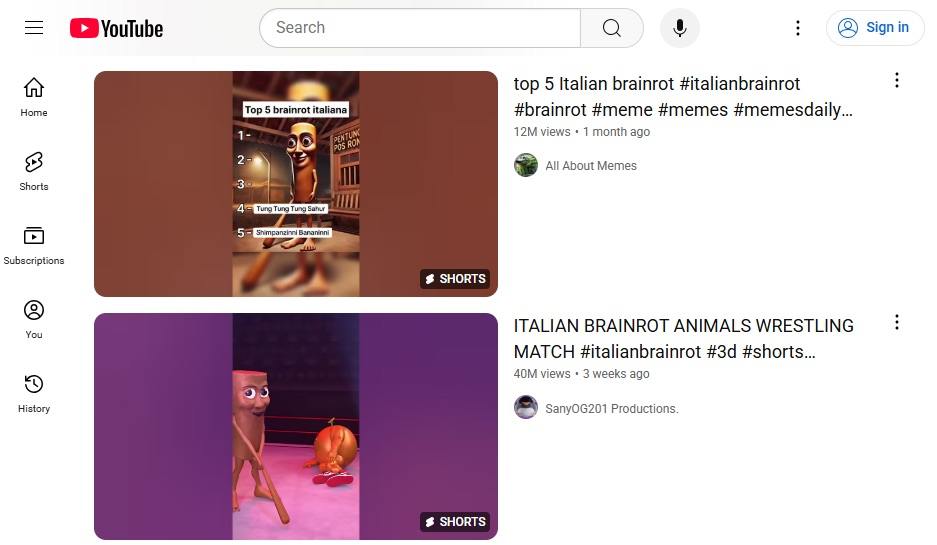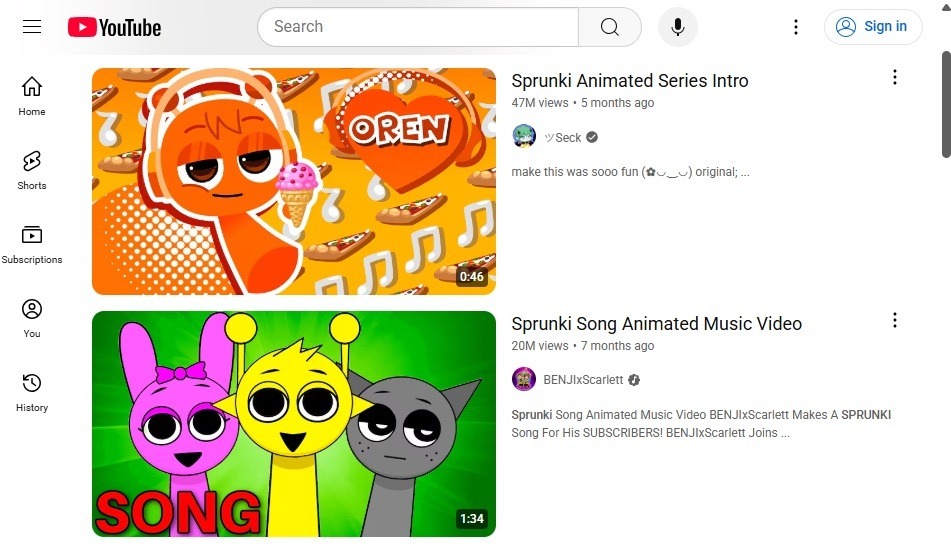Kaspersky research: what interests kids in 2025 | Kaspersky official blog
The internet is vast — and it’s all too easy to end up in the wrong place; especially if you’re a child. That’s why it’s so important to help kids navigate cyberspace and guide them toward safe, age-appropriate content. But how can you know what’s safe or appropriate if you don’t even know what kids are into these days?
This is where Kaspersky Safe Kids comes in. We’ve collected a year’s worth of data from our app, and can now answer that persistent question in every parent’s mind: “What’s my child actually doing online?”
Kaspersky experts have conducted a study to find out what kids are searching for online (including on YouTube), what apps they’re using, which games they love, what music they listen to, and which influencers they follow. You’ll find answers to these and other questions in the full version of the report.
Searching for brainrot memes
We discovered that memes make up 4.87% of the content kids search for on YouTube — a significant percentage. Unsurprisingly, music (21.11%) and influencers (17.17%) are the most popular searches, with cartoons at 6.19% and memes right behind. As for kids’ taste in memes — it’s pretty specific. Right now, brainrot content is hugely popular among children worldwide.
If you’re an active TikTok user, you might already be familiar with a three-legged shark in sneakers or a crocodile-cum-bomber-plane, and if someone asks you “Who’s stronger: Tralalero Tralala or Tung Tung Tung Sahur?” you’ll be ready to name your favorite. If none of that makes any sense to you, here’s an explanation: these are the main characters of the new brainrot meme wave. They’ve replaced the previous fad of Skibidi Toilet — and kids around the world absolutely love them.
Listening to tunes
Music is by far the most popular children’s search category on YouTube — making up over one-fifth of all their searches. And no major changes to what particular genres they prefer have been noted: kids still listen to things like phonk and nightcore.
As for specific artists, there are some interesting changes. Yes, Taylor Swift and Billie Eilish are still hugely popular — but now they’re sharing the spotlight with Sabrina Carpenter, whose hit Espresso went viral, along with several K-pop stars. The most popular song of all was Like Jennie by South Korean artist Jennie. Meanwhile, the most popular group was BLACKPINK — of which Jennie is a member.
Searching for favorite game content (guess which!)
Gaming influencers took third place in YouTube search popularity (with 17.15% of all searches) and general game content came fourth (with 10.14%). Combined, that makes game content even more popular than music. In Google searches, games ranked second in popularity after streaming platforms — making up 13.27%.
As for which games kids love the most — almost no surprises here: Minecraft, Brawl Stars, Fortnite, Roblox and… Sprunki. Sprunki is a newcomer to this list. We suspect this is just a passing trend and may not be as popular next year. However, for the present at least, YouTube is overflowing with Sprunki videos: content creators are posting let’s plays and creating their own full-fledged cartoons based on the game.
These same games, as we’ve covered before, are also a common target for scammers. They regularly come up with new schemes promising free skins, in-game currency, or gifts in exchange for in-game actions — but really they’re just trying to trick kids and drain their parents’ credit cards. So if your child is into any of these games, it’s worth telling them about these and other potential dangers.
What else are kids interested in online?
From what we’ve observed, children around the world currently share a fairly common digital environment. They all enjoy the same games, follow the same influencers, listen to the same music, and laugh at the same memes.
One more thing unites them — they tend to adopt new technologies much earlier than most adults. ChatGPT and other popular neural networks have already become a normal part of kids’ online experience. Now, many children even create their own chatbots using Character.ai — just to “chat” with characters from their favorite games, movies, influencers, and other icons.
Helping children navigate cyberspace is the duty of every responsible adult. Of course, it’s parents who know their child best, so we just want to share some general tips.
- Explore Kaspersky Cybersecurity alphabet together— it’ll help your child get used to the basic principles of cyber-hygiene from an early age.
- Install reliable protection on your children’s devices.
- Subscribe to our Telegram channel to keep yourself informed of potential online dangers.
- Read the full version of our report to learn more about what interests kids online.
- Use Kaspersky Safe Kids, which helps protect your child from inappropriate content.
Kaspersky Safe Kids helps you not only flexibly control what your kids are allowed to search for online and how much time they spend per day on certain apps, but also find out in real time where they are, whether they’ve gone beyond the permitted “geofence”, and how much their phones are charged. Parents can view the history of kids’ internet surfing and set up regular reports on the use of their devices. You can find more information on all the features and settings of Kaspersky Safe Kids in our post Keeping kids safe: a new variation on an old theme.
More articles on children’s safety online:
Kaspersky official blog – Read More




